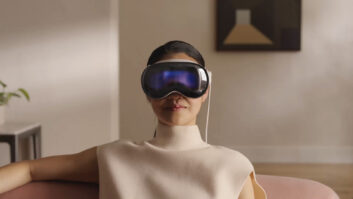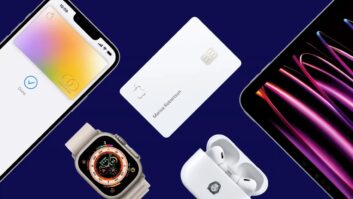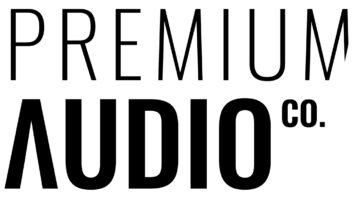NEW YORK –
Apple, Sony, Microsoft, Samsung and
Panasonic might be called the consumer electronics
industry’s veritable Gang of Five, in terms of their
importance to the business over the past 25 years.
According to TWICE’s online 25th Anniversary
Readers’ Poll, that was the positioning of the top CE
players, each selected for its overall contributions
and influence on industry
direction.
The poll collected votes
of 424 respondents to
TWICE’s survey – 46 percent
(the overwhelming majority)
identified themselves
as CE retailers with more
than 25 years of industry
experience. Manufacturers
were second among voters,
at 17 percent, and consultants
were third, at 11 percent.
Those identifying with
“other” profiles represented
13 percent.
While Apple’s taking
the No. 1 position may not
seem shocking in terms of
recent contributions and
overall strength of brand
among consumers, the
amount by which the company
swayed CE industry
insiders, and retailers in
particular, could be.
Approximately 72 percent
of TWICE readers (312
votes) chose Apple as the
most important CE company,
followed by Sony (a
longtime front runner) at 60
percent; Microsoft (161) at
38 percent; Samsung (140)
at 33 percent; and Panasonic
(84) at 20 percent.
Apple, for much of its
early history, butted heads
with mainstream CE retailing
as much as it worked in
partnership with it. It took
the iPod – a relatively new
product over the last 25
years – to make a major
dent on retail selling floors.
In fact, Sony virtually
owned the personal stereo
market beginning in the
early 1980s.
Apple was also the
company that delivered the
Newton, which was considered
a phenomenal bust in
the personal digital assistant
category that has been
supplanted today by smartphones,
including Apple’s huge hit – the iPhone.
Second-ranked Sony, meanwhile, was a kingpin
atop most of the categories in which it participated
during the time period, including, at times, TVs,
camcorders, portable electronics and video game
consoles, with the PlayStation and PlayStation2.
Microsoft, meanwhile, dominated the operating
system space for the personal computing field and
helped to push Apple back into more professional
market spaces such as publishing, graphic arts, video
production and photography, as Windows-powered
PCs swept the consumer home and small office/
home office markets.
But Microsoft has had a harder time making an
impact from a hardware standpoint, failing to overtake
the iPod with the Zune, losing
out in the DVR market
with Ultimate TV, and never
really gaining traction with
its WebTV-connected TV
browser.
While it clearly steers
the PC market, Microsoft is
leaving it to manufacturer
partners to cash in on the
hardware side, as it reaps
the royalties on the software
brains that get them to run.
Samsung has arguably
had as much or more of
an impact than anyone in
the CE retailing industry
over the last 10 years, with
its massively aggressive
worldwide advertising and
promotional campaigns that
helped the company claim
the top position in TV market
share for much of that
time period.
As much as it has accomplished
through marketing,
Samsung has probably
solidified its long-term
standing in the TV category
more through investments in
core display technologies,
including LCD and plasma
flat-panel production.
Through those investments,
Samsung has
helped to not only carve out
a foothold at the top of the
U.S. TV market for its own
brand, it is at the same time
sharing in the revenue of
many of its competitors by
selling them the glass heart
of today’s video displays.
The same can be said of
No. 5 Panasonic, which is
a major stakeholder in the
plasma category through
its acquisition of Plasmaco
in 1996 and subsequent
factory commitments that
for periods allowed it to
dominate the increasingly
margin-thin flat-panel PDP
category. Panasonic also
has investments in LCD,
and in categories outside of TV and video, including
digital imaging, home and portable audio, and cordless
telephony. It’s now making inroads in eco-friendly
electronics, including home power creation and storage,
electric automobile battery systems and powerefficient
appliances.
DirecTV, at No. 6, might also seem a surprise pick for a retailer-heavy audience. The company pioneered
small-dish direct-to-home TV technology, working
with partners including Thomson, and created one
of the nation’s most successful new digital entertainment
products only a few years after the service was
launched. The feat was accomplished working in
tandem with CE retailer distribution and third-party
hardware brands, which started off manufacturing
the integrated receiver descrambler (IRDs) boxes required
to receive and decode the DirecTV channels.
But in recent years the satellite provider has scaled
back retail distribution to go with a mostly direct sales
and installation system, similar to the cable challengers
it originally sought to displace.
Samsung’s biggest rival, LG Electronics (ranked
No. 7 with 12 percent of the vote), also is a strong
player in the TV space, with key investments in both
plasma and LCD panel production. Although its U.S.
marketing and promotional initiatives were less aggressive
than Samsung’s over the last 10 years, it has
risen steadily in both the TV and cellphone categories
to compete almost head to head with its South
Korean challenger in some categories.













